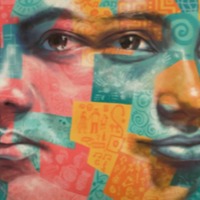
Abraham
There is an estimated 48,000 people living in modern slavery in Libya (GSI 2018). Libya is a major transit destination for migrants and refugees hoping to reach Europe by sea. Human trafficking networks have prospered amid lawlessness, created by the warring militias that have been fighting for control of territories since the toppling of Muammar Gaddafi in 2011. Highly organized trafficking and migrants smuggling networks that reach into Libya from Niger, Nigeria, Chad, Eritrea, Ethiopia, Somalia, Sudan, and other sub-Saharan states subject migrants to forced labor and forced prostitution through fraudulent recruitment, confiscation of identity and travel documents, withholding or non-payment of wages, debt bondage, and verbal, physical, and sexual abuse. In some cases, migrants reportedly pay smuggling fees to reach Tripoli, but once they cross the Libyan border they are sometimes abandoned in southern cities or the desert where they are susceptible to severe forms of abuse and human trafficking. Abraham chose to travel from Eritrea to Europe through smugglers, however he found himself trafficked by brokers and being locked inside a warehouse and held for ransom for over a year. After being released from the trafficker’s camp, he and two friends, Kidane, and Berhane, decided to cross the sea together. They were put out to sea in an old wooden boat that was leaking. They were three days at sea, with no food and no water to drink. Some of the passengers died. Today, the three friends are earnestly advising other people not to go on this dangerous journey. They say enough is enough, irregular travel through Libya should stop now.
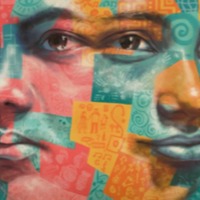
Kidane
There is an estimated 48,000 people living in modern slavery in Libya (GSI 2018). Libya is a major transit destination for migrants and refugees hoping to reach Europe by sea. Human trafficking networks have prospered amid lawlessness, created by the warring militias that have been fighting for control of territories since the toppling of Muammar Gaddafi in 2011. Highly organized trafficking and migrants smuggling networks that reach into Libya from Niger, Nigeria, Chad, Eritrea, Ethiopia, Somalia, Sudan, and other sub-Saharan states subject migrants to forced labor and forced prostitution through fraudulent recruitment, confiscation of identity and travel documents, withholding or non-payment of wages, debt bondage, and verbal, physical, and sexual abuse. In some cases, migrants reportedly pay smuggling fees to reach Tripoli, but once they cross the Libyan border they are sometimes abandoned in southern cities or the desert where they are susceptible to severe forms of abuse and human trafficking. Kidane traveled from Eritrea to Europe through smugglers, however he found himself trafficked by brokers and being locked inside a warehouse for two years. After being released from the trafficker’s camp, he and two friends, Abraham and Berhane, decided to cross the sea together. They were put out to sea in an old wooden boat that was leaking. They were three days at sea, with no food and no water to drink. Some of the passengers died. Today, the three friends are earnestly advising other people not to go on this dangerous journey. They say enough is enough, irregular travel through Libya should stop now.
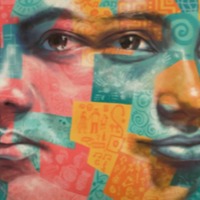
Berhane
There is an estimated 48,000 people living in modern slavery in Libya (GSI 2018). Libya is a major transit destination for migrants and refugees hoping to reach Europe by sea. Human trafficking networks have prospered amid lawlessness, created by the warring militias that have been fighting for control of territories since the toppling of Muammar Gaddafi in 2011. Highly organized trafficking and migrants smuggling networks that reach into Libya from Niger, Nigeria, Chad, Eritrea, Ethiopia, Somalia, Sudan, and other sub-Saharan states subject migrants to forced labor and forced prostitution through fraudulent recruitment, confiscation of identity and travel documents, withholding or non-payment of wages, debt bondage, and verbal, physical, and sexual abuse. In some cases, migrants reportedly pay smuggling fees to reach Tripoli, but once they cross the Libyan border they are sometimes abandoned in southern cities or the desert where they are susceptible to severe forms of abuse and human trafficking. Berhane chose to travel from Eritrea to Europe through smugglers, however he found himself trafficked by brokers and being locked inside for a year. After being released from the trafficker’s camp, he and two friends, Abraham and Kidane, decided to cross the sea together. They were put out to sea in an old wooden boat that was leaking. They were three days at sea, with no food and no water to drink. Some of the passengers died. Today, the three friends are earnestly advising other people not to go on this dangerous journey. They say enough is enough, irregular travel through Libya should stop now. Berhane’s narrative is part of a conversation with two other Eritrean men in a refugee reception centre in Malta, discussing their experience of taking the Libya route to Europe.
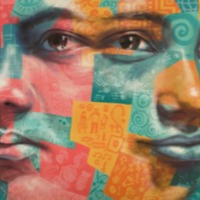
Andemariam
There is an estimated 48,000 people living in modern slavery in Libya (GSI 2018). Libya is a major transit destination for migrants and refugees hoping to reach Europe by sea. Human trafficking networks have prospered amid lawlessness, created by the warring militias that have been fighting for control of territories since the toppling of Muammar Gaddafi in 2011. Highly organized trafficking and migrants smuggling networks that reach into Libya from Niger, Nigeria, Chad, Eritrea, Ethiopia, Somalia, Sudan, and other sub-Saharan states subject migrants to forced labor and forced prostitution through fraudulent recruitment, confiscation of identity and travel documents, withholding or non-payment of wages, debt bondage, and verbal, physical, and sexual abuse. In some cases, migrants reportedly pay smuggling fees to reach Tripoli, but once they cross the Libyan border they are sometimes abandoned in southern cities or the desert where they are susceptible to severe forms of abuse and human trafficking. Andemariam, an Eritrean man, had been living and working in Sudan for over a decade when he was duped into taking the journey to Libya, where he’d been told there would be better employment opportunities. Andemariam and his friend were handed over to Libyan smugglers who imprisoned them in a store for two months before embarking on a difficult sea journey. Upon arrival in Italy, Andemariam had lost all his belongings, was sick, and was unable to find work. He later traveled to Germany to seek. medical attention At the time of the interview (2015) he was still waiting to hear about his refugee status.
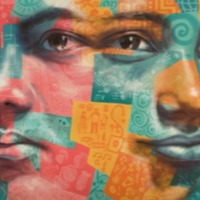
Chidi
There is an estimated 48,000 people living in modern slavery in Libya (GSI 2018). Libya is a major transit destination for migrants and refugees hoping to reach Europe by sea. Human trafficking networks have prospered amid lawlessness, created by the warring militias that have been fighting for control of territories since the toppling of Muammar Gaddafi in 2011. Highly organized trafficking and migrants smuggling networks that reach into Libya from Niger, Nigeria, Chad, Eritrea, Ethiopia, Somalia, Sudan, and other sub-Saharan states subject migrants to forced labor and forced prostitution through fraudulent recruitment, confiscation of identity and travel documents, withholding or non-payment of wages, debt bondage, and verbal, physical, and sexual abuse. In some cases, migrants reportedly pay smuggling fees to reach Tripoli, but once they cross the Libyan border they are sometimes abandoned in southern cities or the desert where they are susceptible to severe forms of abuse and human trafficking. Chidi was trafficked in Libya on his way to France. When his friend failed to pay the $3,000 fee to smugglers, he was locked up and tortured. Though his family took out loans to pay of his 'debt', he was later kidnapped and imprisoned once again. Chidi received support from Programme X including counselling, financial assistance and business skills training. He went on to set up a retail unit selling women’s accessories.
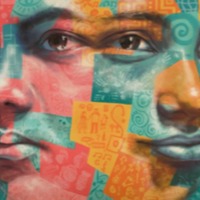
Malik
The 2018 Global Slavery Index Report estimated that approximately 43,000 people were living in modern slavery in Senegal. Based on existing data, Human Rights Watch estimates that more than 100,000 talibés living in residential daaras across Senegal are forced by their Quranic teachers, also known as marabouts, to beg daily for money, food, rice or sugar. Thousands of these children live in conditions of extreme squalor, are denied sufficient food and medical care, and many are also subject to sexual and physical abuse amounting to inhuman and degrading treatment. A ‘Talibé’ is a “disciple” or student of the Quran. Talibés can be adults or children of any age, but the vast majority in Senegal are boys between the ages of 5 and 15, particularly those living at residential daaras. Some talibé children live with family and attend Quranic schools during the day. Most female talibés are day students that do not live at the Quranic schools.Malik* is a 16 years old former talibé who ran away from his daara in Touba.
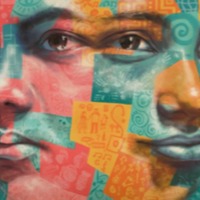
Ibrahim
The 2018 Global Slavery Index Report estimated that approximately 43,000 people were living in modern slavery in Senegal. Based on existing data, Human Rights Watch estimates that more than 100,000 talibés living in residential daaras across Senegal are forced by their Quranic teachers, also known as marabouts, to beg daily for money, food, rice or sugar. Thousands of these children live in conditions of extreme squalor, are denied sufficient food and medical care, and many are also subject to sexual and physical abuse amounting to inhuman and degrading treatment. A ‘Talibé’ is a “disciple” or student of the Quran. Talibés can be adults or children of any age, but the vast majority in Senegal are boys between the ages of 5 and 15, particularly those living at residential daaras. Some talibé children live with family and attend Quranic schools during the day. Most female talibés are day students that do not live at the Quranic schools.Human Rights Watch estimates the number of talibé children forced to beg in Senegal to be over 100,000.13-year-old Ibrahim* is a runaway who spent several years at a Quranic school in Touba.
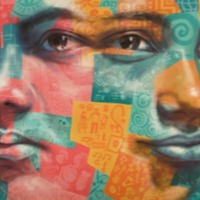
Amadou
Across Senegal, an estimated 50,000 boys living in traditional Quranic boarding schools, or daaras, are forced to beg for daily quotas of money, rice or sugar by their Quranic teachers, known as marabouts. Known as talibés, these children are sent by their parents to daaras to learn the holy Coran. Children in these daaras are often beaten, chained, bound, and subjected to other forms of physical or psychological abuse amounting to inhuman and degrading treatment. While in 2016 the government introduced a new programme to 'remove children from the streets', it has done little to reduce the alarming numbers of children subjected to exploitation, abuse and daily neglect. Amadou was sent to a daara to be a talibé in Dakar. After refusing to learn he was locked up for two years, being released once his 'sentence' was over. Once released, Amadou ran away during the hours of begging and sought reguge at a children's centre.
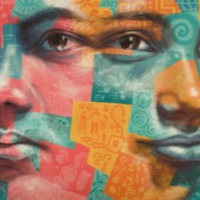
Julie
There are an estimated 784,000 people living in modern slavery in the Philippines (GSI 2018). Men, women and children are subjected forced labour and sex trafficking both within the country and in destination countries. Women and children are subjected to sexual exploitation in brothels, bars, and massage parlours, online, as well as in the production of pornography. The Philippines is an international hub for prostitution and commercial sex tourism – a highly profitable businesses for organised criminal syndicates. The demand for sex with children among both local and foreign men has continued to fuel child sex tourism. Rising internet usage rates, the availability of mobile phones and poverty has fostered online child sexual exploitation. Immediately after graduating from high school, Julie was enslaved in Manilla where she danced and entertained customers. She escaped and returned home, but reflects on her friend Carmen who wanted to go to Japan, as they had originally been promised, where she was enslaved in prostitution.